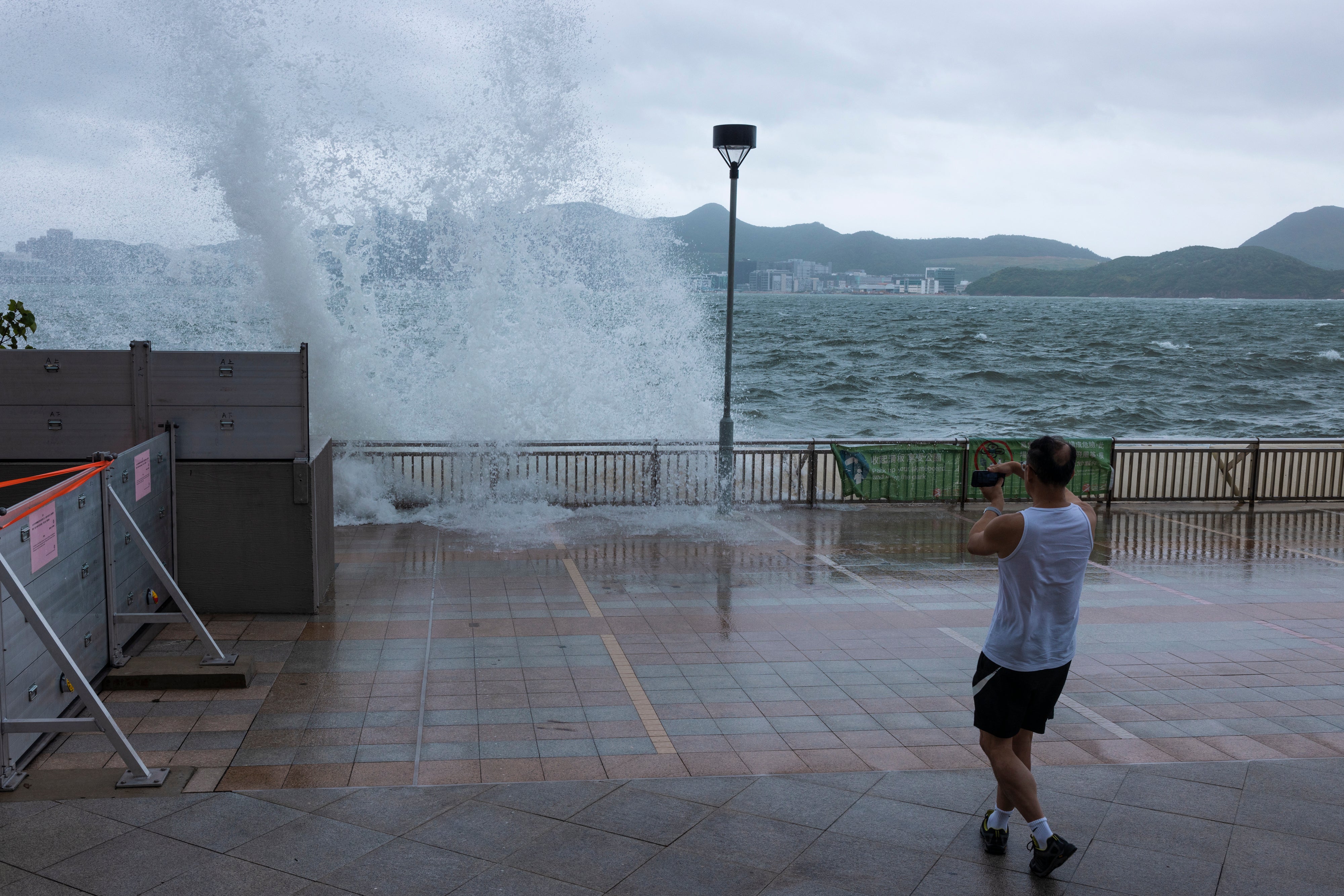Typhoon Talim hammers China leaving flooded streets and uprooted trees
Firefighters rescue passengers pinned in vehicles by fallen tree branches as they clear roadblocks

Tens of thousands of people were evacuated as typhoon Talim, the first tropical storm to make landfall in China, devastated the southern provinces.
The typhoon made landfall in Zhanjiang city of Guangdong province late on Monday around 10.20pm local time, with winds near its centre clocked at a top speed of 136.8kph, according to the Guangdong weather bureau.
Storm surges and lashing rains hammered the southern coastline from Guangdong to Hainan province, with rains causing floods and water logging in large parts, the meteorological administration said.
An orange weather alert, the second-highest warning in a four-tier colour-coded system, was issued and nearly 230,000 people in Guangdong were evacuated to safety as of 5pm local time on Monday, according to state news agency Xinhua.
Videos on Chinese social media site show trees falling on moving vehicles, flooded roads and a whale washing ashore as people struggled against the winds. The effects of the typhoon were felt more than 1,000km to the northeast in Fuzhou city in Fujian province.
On Tuesday, firefighters rescued passengers pinned in vehicles by fallen tree branches as they cleared roadblocks and assisted other motorists to safety, according to state media.
Hundreds of trains in southern China’s Guangdong and Hainan, including high-speed trains between Guangzhou and Shenzhen, the metropolis adjacent to Hong Kong, were also suspended.
Apart from China, authorities in Vietnam also evacuated about 30,000 people on Monday from the areas forecasted to be hardest hit in Quang Ninh and Hai Phong provinces.
The storm is expected to further weaken and dissipate as it moves northwesterly into northern Vietnam later on Tuesday, it said.
The typhoon weakened into a severe storm after landfall and wind speeds had fallen to a maximum 90 kmh near its centre on Tuesday morning, China’s Meteorological Administration said.
The threat from typhoon Talim, however, hasn’t ended yet as parts of Guangxi were told to brace for flash floods through Tuesday.
The typhoon is expected to move to the Beibu Gulf in the South China Sea, and the meteorological administration warned the typhoon may make a second landfall in the coastal area of Guangxi Zhuang Autonomous Region on Tuesday morning.
The typhoon lashed China while it is already grappling with multiple climate disasters in different parts of the country this year, with torrential rains and floods devastating the southeast region leaving dozens dead.
Meanwhile, northern provinces, including capital Beijing, suffered record-shattering heat as China’s Sanbao Station recorded a temperature of 52C, the highest ever for the country, just six months after the record minus 53C temperatures were recorded in Mohe.
The extreme weather comes as globally record-breaking temperatures are being recorded driven by man-made climate crisis with Europe sweltering through a heatwave currently along with the US southeast. Meanwhile, forest fires continue to rage in Canada and parts of Europe.
The global heating of 1.2C since the industrial-era coupled with the El Nino phenomenon warming the Pacific has been attributed for these extremes as scientists continue to warn that continuing greenhouse gas emissions from fossil fuels can drive more extremes.
This year is expected to be the hottest on record for Earth, according to the research nonprofit Berkeley Earth. The first few days of July have already been recorded as the hottest days on Earth.
Join our commenting forum
Join thought-provoking conversations, follow other Independent readers and see their replies
Comments





Bookmark popover
Removed from bookmarks